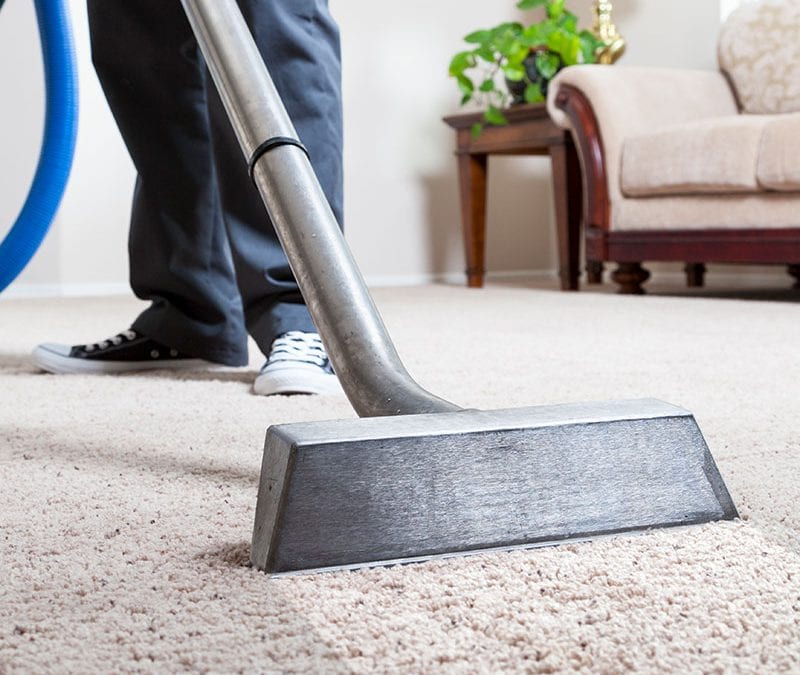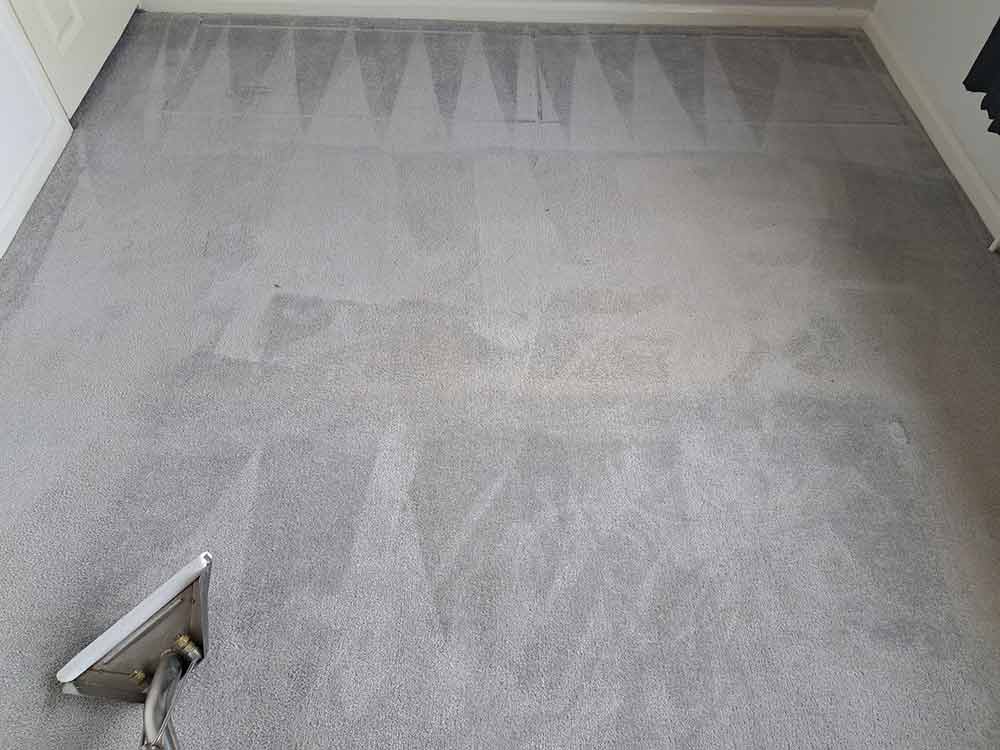If you leave baking soda on your carpet too long, you may encounter several issues. The powder can discolour your carpet, especially darker or vibrant hues, due to its chemical interaction with carpet dyes. It might also absorb moisture, leading to mildew and a musty smell, complicating cleaning efforts considerably. Additionally, the prolonged contact can weaken the carpet fibres, making them look dull and feel rough. Always test a small, hidden area first and vacuum it up within 15-20 minutes. Doing so helps maintain your carpet’s appearance and prevents long-term damage. Discover how to effectively use this common household item while safeguarding your home’s interior.
Discoloration and Staining
Sprinkling baking soda on your carpet can sometimes lead to discoloration, especially with darker or more vibrant fabrics. You need to be aware of how baking soda reacts with different carpet materials to avoid unintended carpet colour changes. Baking soda, primarily sodium bicarbonate, can interact chemically with certain dyes and fibres under specific conditions. This interaction might result in colour fading or altering the original hue of your carpet.
When you apply baking soda, it’s essential to test it first on an inconspicuous area of your carpet. This step will help you determine if the substance will cause any adverse reactions. If you notice any discoloration during this spot test, it’s best to refrain from using baking soda on that particular carpet.
In addition, make certain that you don’t over-apply baking soda. A light, even sprinkle is sufficient for most cleaning purposes.
If after application you observe any changes in carpet colour, act quickly by vacuuming up the baking soda thoroughly. Leaving it on the carpet for an extended period increases the risk of permanent discoloration.
Always follow up with a damp cloth to remove any residual powder, and allow your carpet to dry completely to assess the full extent of any colour changes.
Moisture Retention Issues

Another concern when using baking soda on carpets is its tendency to retain moisture, which can lead to several issues. Moisture build up isn’t just about a damp carpet; it extends to deeper complications that may affect the overall environment of your home. When moisture lingers within the carpet fibres mixed with baking soda, it creates an ideal setting for several unwanted scenarios.
Here are a few vivid pictures of what might occur:
- Persistent Dampness: Imagine walking across your living room and feeling a slight squish underfoot, a tell tale sign of moisture trapped below the surface.
- Mildew Formation: Visualize small, dark spots starting to speckle across your carpet, spreading a musty odour that turns more pungent over time.
To tackle these issues, it’s essential to guarantee that any application of baking soda is followed by thorough vacuuming. You might also consider using dehumidifiers or fans to help dry out the carpet area more efficiently.
Damage to Carpet Fibers
Using baking soda excessively can weaken and break down the fibres of your carpet, potentially leading to premature wear and damage.
When you leave baking soda on your carpet for prolonged periods, it absorbs moisture. This moisture retention, coupled with the granular nature of baking soda, can lead to fibre breakdown. The constant grinding underfoot can accelerate this process, causing not just wear but also texture alteration.
The impact on your carpet’s texture can be quite noticeable. Initially, the areas treated with baking soda might appear cleaner or brighter. However, over time, these patches may turn dull and feel rougher compared to untreated sections. This is because the abrasive qualities of baking soda can disturb the inherent structure of the carpet fibres.
To avoid such damage, it’s important to use baking soda sparingly and to guarantee it’s thoroughly vacuumed after a short interaction with the carpet. Leaving it to sit and settle can lead to the fibres becoming brittle and frayed, altering the overall integrity and appearance of your carpet.
Effects on Indoor Air Quality

Baking soda not only affects carpet fibres, but it also has a significant impact on your home’s indoor air quality. When you leave baking soda on your carpet for an extended period, it can lead to several unintended consequences that may compromise the air you breathe every day. These issues can escalate into health risks, particularly if anyone in your home suffers from respiratory conditions or allergies.
Here are some vivid scenarios to take into account:
- Respiratory Irritation: The fine powder of baking soda can become airborne easily. You might begin to notice a persistent cough or sneezing fits, which are your body’s way of reacting to these tiny particles.
- Aggravated Allergies: For those with existing allergies, prolonged exposure to air laden with baking soda particles acts as allergy triggers, exacerbating symptoms like itchy eyes, runny nose, and other discomforts.
It’s essential to understand that what’s meant as a cleaning aid can turn problematic if not managed properly. Always be mindful of how long you leave baking soda on your carpet to avoid these air quality issues.
Cleaning and Maintenance Challenges

While managing the health impacts of baking soda on indoor air quality is important, you’ll also face several challenges in cleaning and maintaining your carpet effectively. Baking soda, though a popular remedy for neutralizing pet odours, can embed itself deeply into carpet fibres if left too long. This residue, while not immediately visible, gradually accumulates, complicating your long-term cleaning efforts.
You need to be aware that the fine powder can clog vacuum filters and potentially reduce the suction efficiency over time. Regular maintenance of your vacuum cleaner is essential; check and clean filters and components more frequently than usual to prevent malfunctions. If baking soda isn’t thoroughly removed, it can attract moisture and lead to mildew or mould growth under your carpet, posing a significant health risk and potentially damaging the carpet structure.
To avoid these pitfalls, after applying baking soda, don’t wait longer than 15-20 minutes before beginning the vacuuming process. Make sure you’re using a vacuum with a high-efficiency particulate air (HEPA) filter to better capture the fine particles.
For thorough cleaning, occasionally seek professional carpet cleaning services that can more effectively remove all residues and deeply embedded dirt that regular vacuuming might miss. This approach will help maintain your carpet’s appearance and longevity while promoting a healthier indoor environment.



